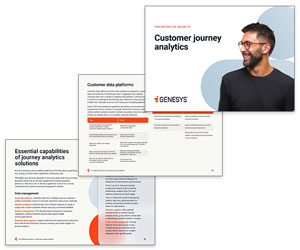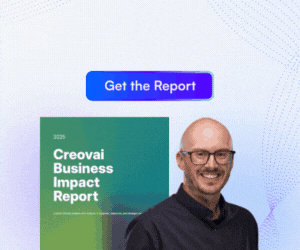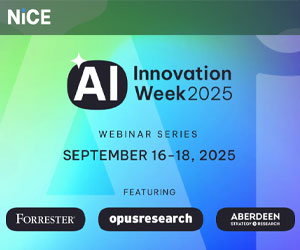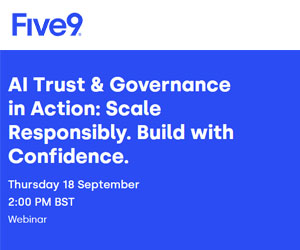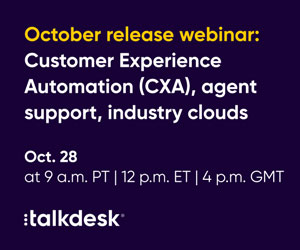Government agencies share many common challenges in serving their constituents. Still, certain obstacles are unique to individual agencies. There’s also a lot of variation, depending on an agency’s level of maturity for processes and technology.
Businesses in the private sector also struggle with this; it’s just labeled differently as “shopping cart abandonment.” While the public sector doesn’t have competition in the same way, government agencies also want to deliver great experiences and accomplish the mission of the agency.
In this article, we’ll look at seven of the most common trends we see in public sector service delivery and how state, local and federal agencies are addressing them.
1. Moving Away From Transactional
Agencies are increasingly focused on improving the citizen experience. They want to help their constituents resolve problems quickly and reduce the need to return repeatedly to get help or find the right information – or go to multiple sites.
If someone needs help filing for unemployment, agencies can do more than simply answer a question. They can anticipate other needs that a job loss may produce, such as childcare, food assistance and more.
For example, if someone is trying to file for child support, agencies can demonstrate empathy with responsive service.
When a human services agency provides families with the resources and information they need to weather a difficult situation and get back on their feet quickly, the agency delivers on its mission.
On an individual level, agents are mission-driven to serve their communities. Getting to this point of making personal connections requires a shift in how agencies support agents. The agent’s value shouldn’t be based on how many phone calls they answer, but rather how many citizens they help by making them self-sufficient.
2. Addressing the Challenge of Digital
There’s voice and then there are all the other communications channels that fall under the digital category — messaging apps, websites, portals, kiosks, voicebots, email. Agencies are focusing on how to harness all these technologies to have more of a digital presence, in addition to offering traditional voice.
Part of the challenge is that citizens use various technologies. For example, some might not even have an email address and so they always call in for support. But an agent focused on building self-sufficiency can help the caller create an email address and walk them through how to enter it into a portal.
Or, spending a few minutes explaining how to get an app on a phone gives the caller confidence and a new level of self-sufficiency. Focus on those who need the most assistance for simple tasks.
3. Leading the Way With Innovation
Government agencies are looking to the private sector as models of engagement. Citizens expect to do banking or shop online with speed and efficiency — and today they expect government agencies to provide the same level of service.
Agencies want to offer that transparency and ease of use; they want to let citizens easily track any process. For example, if an immigrant is waiting for approval for a spouse or child to join them in the US, having transparency means they won’t have to call to see where they are in a process or get updates.
High transparency and low effort are ideal — and work even better when apps are available. Prioritising automation to support self-service can make agencies extremely efficient.
4. Overcoming Compassion Fatigue
Agents are trained to be on the frontlines to support those affected by natural disasters. But no one was truly prepared for the COVID-19 pandemic. Agents fielded an endless number of calls about critical and even life-threatening issues.
There were pleas for payments they were due whether from unemployment, disability or general public assistance. Many had no safety net and were in dire straits. The growing backlog of needs only added to the emotional toll it took on agents.
This is called “compassion fatigue.” As hardship stories increased, having inadequate tools and systems gave agents a limited ability to help. The pressure to keep moving leaves little time or energy for an empathetic response. Burnout leads to attrition.
Automating with self-service channels empowers citizens to get answers to common questions quickly. And that gives agents more time to help those who need a human conversation. Spending an extra minute or two serving someone who really needs it reduces agent stress. Connected communications are an essential component to providing empathetic service.
5. Getting Past the Tech Plateau
Agencies tend to push their technology investments as far as they’ll go, primarily because of budget issues. There’s also a common feeling that you need to stick with a technology after having made an investment in it and taking on debt.
But many have outgrown the technology — and it no longer provides enough value. For example, old IVRs are often “ancient” in technology years and highly inefficient.
Gaining efficiency requires a commitment to invest differently as you rethink your focus to be less transactional. Upgrading in the same way and allocating more people and resources during peak times isn’t the answer. Plateaus are a sign that it’s time to rethink how you solve problems.
6. Moving to the Cloud
Government agencies at all levels suffer from siloed systems. This limits their ability to gain a full view of each citizen’s journey — and prevents them from serving citizens efficiently.
For example, if someone first engages with your agency via the web and later calls you on the phone to resolve the issue, they’ll likely have to repeat the same information. Connecting these disparate systems, including your CRM system, is essential.
Moving to a cloud-based platform solves fundamental problems. It enables you to connect conversations across voice and digital. It can also deliver value immediately. For example, by eliminating physical phones, agencies can more readily enable remote workers.
The concept of a cloud migration might conjure up a long and complex road. It requires a secure environment that meets your unique compliance and security needs. However, most government agencies have a lot of services in common, and you can reuse that logic. A cloud platform can support those common requirements and easily adapt to those that are unique.
7. Maintaining Data Integrity and Relevance
Agencies depend on accurate data to track KPIs. But answering a call in 10 seconds likely is a KPI of your transactional past. When you use data to look at outcomes, you learn how you can make citizens’ lives better by reducing their effort to solve problems or by solving problems before they occur.
Resolving inquiries on first contact — via phone or on an app — is standard in private industry and it’s a valuable metric for government agencies that make citizen experience a top priority.
Sending constituents to multiple sites or agencies to complete related tasks is counter to modern goals. Agencies don’t want people to abandon their searches for services and information because it’s too much trouble. They want those constituents to get what they need — quickly.
In the private sector it’s an issue of cart abandonment and lost revenue. For government, it could be much more: getting food stamps to family in need, securing child support payments to avoid eviction, or reporting child or elder abuse.
Where to Begin
Citizen service doesn’t work well in silos. With real-time data integration from all systems, agents have the support needed to serve constituents fast and effectively.
Bring together all primary stakeholders and look at the journeys of those you serve. Find the pain points and identify the systems and data you need to integrate to make the process seamless.
Ask hard questions about whether you’re replicating inefficiencies and following a “this is how we’ve always done it” tendency. Challenge your own preconceptions about what you can accomplish in this new cloud world and think about how innovative approaches can solve problems for the long-term.
You don’t have to be first in your digital transformation, but don’t be last — and don’t be late. There’s too much at stake for your employees and your constituents.
This blog post has been re-published by kind permission of Genesys – View the Original Article
For more information about Genesys - visit the Genesys Website
Call Centre Helper is not responsible for the content of these guest blog posts. The opinions expressed in this article are those of the author, and do not necessarily reflect those of Call Centre Helper.
Author: Genesys
Published On: 10th Mar 2022
Read more about - Guest Blogs, Genesys






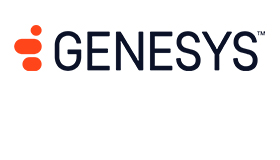 Genesys empowers more than 8,000 organisations in over 100 countries to improve loyalty and business outcomes by creating the best experiences for their customers and employees. Through Genesys Cloud, the AI-Powered Experience Orchestration platform, Genesys delivers the future of CX to organisations of all sizes so they can provide empathetic, personalised experience at scale. As the trusted platform that is born in the cloud, Genesys Cloud helps organisations accelerate growth by enabling them to differentiate with the right customer experience at the right time, while driving stronger workforce engagement, efficiency and operational improvements.
Genesys empowers more than 8,000 organisations in over 100 countries to improve loyalty and business outcomes by creating the best experiences for their customers and employees. Through Genesys Cloud, the AI-Powered Experience Orchestration platform, Genesys delivers the future of CX to organisations of all sizes so they can provide empathetic, personalised experience at scale. As the trusted platform that is born in the cloud, Genesys Cloud helps organisations accelerate growth by enabling them to differentiate with the right customer experience at the right time, while driving stronger workforce engagement, efficiency and operational improvements. 






